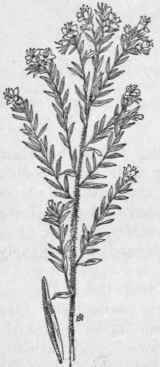Viper's Bugloss Echium Vulgare, L. Blueweed, Blue Devil, Blue Thistle, Viper's Herb, Snake Flower
Description
This section is from the book "A Manual Of Weeds", by Ada E. Georgia. Also available from Amazon: A Manual Of Weeds.
Viper's Bugloss Echium Vulgare, L. Blueweed, Blue Devil, Blue Thistle, Viper's Herb, Snake Flower
Introduced. Biennial. Propagates by seeds. Time of bloom: June to September. Seed-time: August to November. Range: New Brunswick to Ontario and Nebraska, southward to Georgia. Habitat: Fields, meadows, pastures, waste places.
In Australia this weed is known as "Paterson's Curse," from the settler who unwittingly introduced it, and it is "proclaimed" by the state, to the end that all men's hands may be turned against it. (Fig. 237.) First-year leaves tufted, linear oblong to lance-shaped, three to six inches long, entire, bristly hairy on both sides, crowning a thick, dark taproot which bores into the soil often to the depth of more than a foot. Flowering stalks appear in the second season, one to two feet high, erect, slender, bristly, the bristles springing from fine, red tubercles which speck the stem; on the leaves these prominent specks are pale green; when near maturity the bristly hairs harden into prickles, which come away as readily as cactus spines, making the weed a most vicious thing to handle. Flower-spike compound, formed of many small, one-sided, curving spikelets springing from the upper axils; calyx five-toothed, bristly; corolla a half-inch or more long, irregular funnel-form, unequally five-lobed, pink in the bud, violet-blue when fully open, withering to a deep purple; the five stamens are unequal, the longer ones exserted and all have red anthers. Nutlets small, three-angled, wrinkled, of very long vitality, and too often an impurity among other seeds.

Fig. 237. -Viper's Bugloss (Echium vulgare). X 1/4.
Means Of Control
In meadows and pastures, spudding or hoe-cutting first-year leaf tufts from their roots in autumn or early spring. Overlooked plants that produce flowering stalks the next season should be cut close to the ground before any seed matures. Cultivation of the ground destroys the weed if no seeds are in the soil.
Continue to:


